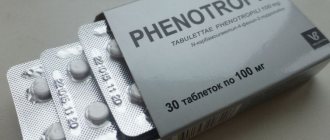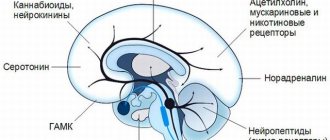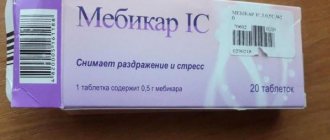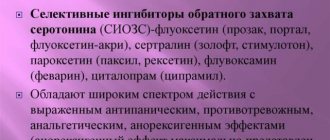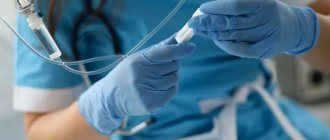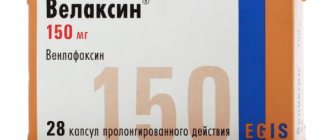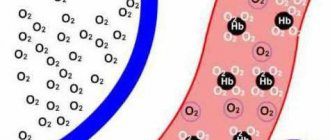- March 22, 2020
- Neurology
- Ulyana Romanova
"Hydroxyzine Canon" is a first-generation H1-histamine receptor blocker, which is a phenothiazine derivative. It is distinguished by sedative and antimuscarinic properties and the ability to inhibit the activity of certain subcortical zones.
Why is Hydroxyzine Canon prescribed? Are there any contraindications? How to take this medicine? You will find answers to these and many other questions regarding this drug in this article.
Pharmacodynamics and pharmacokinetics
The substance blocks the work of central n1-histamine and m-cholinergic receptors. The drug exhibits a sedative effect and has moderate anxiolytic activity. Hydroxyzine is a fairly mild tranquilizer that also has an antiemetic effect.
The product improves cognitive abilities, attention and accelerates memory processes. As a rule, Hydroxyzine preparations do not cause dependence, either mental or physiological. Even after prolonged use, withdrawal syndrome does not develop.
This substance also has antispasmodic, antihistamine and anticholinergic effects, relieves pain and moderately inhibits the production of gastric acids. The medicine is often prescribed to reduce itching in eczema, urticaria, dermatitis, etc.
Depending on the dosage form, the effect of taking the substance will be observed within 10-40 minutes. The antihistamine effect occurs 60 minutes after oral administration.
After taking the tablets, the substance is quickly absorbed by the body. Reaches its maximum concentration in the blood within 2 hours. The drug overcomes the blood-brain and placental barriers. The half-life is up to 7 hours in children, about 20 in adults.
In persons suffering from liver failure, due to the fact that the drug is metabolized in the liver (metabolite - ceterizine), the antihistamine effect can last a long time (more than 90 hours), and the half-life will increase to 37.
Pharmacokinetic parameters in elderly people are slightly altered, the half-life lasts up to 29 hours. Hydroxyzine is excreted through the kidneys in the form of metabolites, less than one percent remains unchanged.
During clinical trials and animal studies, no carcinogenic or mutagenic effects of the drug on the body were revealed.
pharmachologic effect
As mentioned above, “Hydroxyzine Canon”, being a first-generation H1-histamine receptor blocker, inhibits the activity of specific subcortical zones.
In addition to this action, the medication also produces antiemetic and bronchodilator effects. A moderate inhibitory effect on gastric secretion was observed.
It is worth noting that this substance significantly reduces the manifestation of such an unpleasant symptom as itching in patients with dermatitis, eczema and urticaria.
The compound also has a good effect on cognitive functions, improving memory and attention. And this despite the fact that it does not cause mental dependence or addiction. Also, no withdrawal syndrome was recorded with long-term use of the medication.
A distinctive feature of hydroxyzine hydrochloride is its ability to depress the central nervous system, as well as produce sympatholytic, local anesthetic, antispasmodic, antihistamine, muscle relaxant and anticholinergic effects.
If a person is diagnosed with liver failure, the main effect (H1-histamine blocking) can last 96 hours.
After conducting polysomnography on patients suffering from anxiety and insomnia, it was found that in their case, treatment with a sedative gave an excellent result. The number of night awakenings decreased, sleep duration lengthened, and muscle tension decreased.
It is worth noting that this is a very powerful sedative. Just an hour after its use, an H1-histamine blocking effect occurs, and after 30-45 minutes a sedative effect occurs.
Indications for use
Hydroxyzine hydrochloride is prescribed:
- to eliminate anxiety and increased excitability of the nervous system;
- alcoholics during abstinence;
- for psychoneurotic disorders;
- as part of complex treatment after operations and some injuries;
- for premedication;
- with internal tension, adaptation disorders, generalized anxiety, somatic diseases;
- to relieve symptoms of atopic dermatitis, itchy dermatosis, urticaria, eczema;
- as an antiemetic according to indications.
General information about the drug
In addition to blocking histamine receptors, Hydroxyzine inhibits the high activity of subcortical zones.
The drug does not have the ability to cause addiction in the patient. The therapeutic effect occurs 15-20 minutes after taking the medicine orally. The medication has a positive effect on human cognitive functions - significantly improves the quality of memory and increases attentiveness. The active components quickly relax smooth muscle fibers, which contributes to an effective bronchodilator effect. Analgesic properties reduce tension and pain in eczema and urticaria.
Description of the drug
Hydroxyzine belongs to the pharmacological group of medications that act on the centers of the nervous system - anxiolytics. INN – Hydroxyzine. The drug is used for severe symptoms of anxiety, as well as for emotional stress and allergic reactions.
Hydroxyzine is produced in white, round tablets with an existing score. The tablets on the break are also white. The tablets are packaged in blisters of 10 pieces each and in cardboard boxes of 2, 3, 5 blisters. The manufacturer includes an annotation on the use of the medication in each box.
The price of Hydroxyzine in the Russian Federation is presented in the table.
| Name | Number of pieces in 1 package | Dosage of the main component in 1 tablet | average cost |
| Hydroxyzine Canon | 25 | 25 | 215-279 |
| Hydroxyzine | 10 | 10 and 25 | 230-255 |
Compound
One tablet contains the active ingredient hydroxyzine hydrochloride in a dosage of 25 mg. The tablets also contain additional components that increase the effectiveness of the drug:
- corn starch in dosage – 30 mg;
- silicon dioxide in a volume of 0.7 mg;
- magnesium stearate molecules in an amount of 1 mg;
- mannitol at a dosage of 40 mg;
- MCC in the amount of 33.3 mg.
Hydroxyzine hydrochloride is not a depressant of the cerebral cortex, but has a depressant effect only on subcortical receptors in the centers of nerve fibers, and also blocks cholinergic receptors and histamine H1 receptors. This effect on the central nervous system provides the drug with a sedative effect and anxiolytic effect.
Clinical studies confirm that taking the drug in therapeutic dosages does not increase gastric acidity and does not affect its secretion, and its antihistamine properties have been confirmed in the treatment of urticaria of various etiologies, as well as allergic rashes and itching.
Pharmacological properties of the drug
The antihistamine effect begins to appear 1 hour after taking the tablet. The therapeutic effect with a one-time use can reach 72-96 hours. Hydroxyzine has no carcinogenic or mutagenic effects on the patient's body. After use, the medication is quickly absorbed in the gastrointestinal tract. Its maximum concentration in the bloodstream reaches after 120 minutes.
Metabolism occurs in liver cells. The half-life of the drug depends on the age of the patient (on average 7 hours). In children, the time period is 2-10 hours, in young people – 20 hours, in elderly patients – 29 hours. The active component is excreted from the body using the kidneys and urine.
Contraindications
The medicine is not recommended for use:
- patients with glaucoma;
- with prostate hypertrophy;
- if the patient has increased seizure activity;
- with myasthenia;
- patients with renal and liver failure;
- for dementia;
- pregnant women;
- with porphyria;
- during lactation;
- if you are allergic to the active substance, including if hypersensitivity reactions to other piperazine derivatives, cetirizine, ethylenediamine or aminophylline have previously been observed;
- during labor.
Contraindications Hydroxyzine Canon tablets 25 mg
Hydroxyzine is prescribed as an antihistamine, as well as an analgesic and sedative. The main use of the drug for the following pathologies:
- anxiety;
- psychomotor overexcitement;
- internal overvoltage;
- disruption of the adaptation process;
- irritability and increased nervousness;
- withdrawal syndrome of alcohol etiology;
- premedication after surgical treatment;
- allergic etiology itching;
- dermatitis;
- skin eczema.
Eczema
The drug is not prescribed for the following pathologies in the patient:
- allergy to components in the medicine;
- porphyria;
- lactose intolerance;
- Lapp deficiency.
Also, Hydroxyzine is not prescribed in pediatrics under 3 years of age, or for women during lactation and pregnancy. Hydroxyzine passes through the placenta barrier and is also detected in breast milk. Its concentration is higher in the fetus than in the body of a pregnant woman.
Hydroxyzine is used with great caution in the following concomitant diseases in the patient:
- myasthenia gravis;
- heart failure;
- arrhythmia;
- dementia;
- difficulty urinating and constant constipation;
- epilepsy and hypertension;
- hypokalemia and hypomagnesemia;
- glaucoma;
- hyperthyroidism;
- pathologies of the gastrointestinal tract.
Side effects
In the first few days of using Hydroxyzine, drowsiness, general weakness, dizziness and headache may occur.
The following may also appear:
- tachycardia, allergic reactions, nausea;
- constipation and urinary retention;
- dry mucous membranes, increased sweating;
- disturbances of vision and accommodation of the eye;
- low blood pressure, fever, increased levels of liver enzymes;
- bronchospasm.
Very rarely, patients undergoing treatment with Hydroxyzine experienced convulsions, tremors and disorientation, paradoxical agitation and increased motor activity, and ataxia.
As a rule, most reactions are transient or disappear after reducing the daily dosage.
Overdose and adverse reactions
In case of an overdose of the drug, the following symptoms occur: vomiting, tachycardia, drowsiness, hyperthermia, nausea, hallucinations and confusion.
It is also possible to develop respiratory depression, arrhythmia, and in some cases a decrease in blood pressure and convulsions. The manifestation of these symptoms can lead to worsening unconsciousness and the onset of cardiopulmonary collapse.
To relieve the symptoms that have arisen, it is necessary to perform lavage using endotracheal intubation.
Activated carbon can also be used, but its effectiveness has not been proven.
In addition, you need to monitor the state of blood circulation and breathing. To ensure adequate oxygenation, Thiamine, Dextrose and Naloxone are administered. To achieve a vasopressor effect, Metaraminol or Norepinephrine is used.
After eliminating all symptoms of overdose, it is necessary to monitor blood pressure and cardiac activity over the next twenty-four hours.
Side effects are manifested by the following symptoms:
- cardiovascular system – decreased blood pressure and tachycardia;
- Central nervous system and peripheral nervous system - constant fatigue, ataxia, headache, tremor and convulsions, weakness and drowsiness;
- digestive system - constipation, dry mouth and excessive transaminase activity.
Hydroxyzine, instructions for use (Method and dosage)
The drug is prescribed orally or intramuscularly, depending on the form of release, disease and age.
For the symptomatic treatment of anxiety, adults are recommended to take 25 to 100 mg of the substance per day. As a rule, 12.5 mg is used in the morning and at lunch and 25 before bed.
Children before surgery are prescribed 1 mg per kg of weight 60 minutes before the procedure. Administration of one dose the night before is also indicated.
Premedication for adults is carried out in dosages of 50 to 200 mg orally or 1.5-2.5 mg per kg of patient weight intramuscularly, one hour before surgery.
To eliminate itching, use from 25 to 100 mg of the drug, 3-4 times a day.
For the treatment of itching in children from one to 6 years of age, 1-2.5 mg per kg of child weight per day is prescribed, in several doses.
Children over 6 years of age - from 1 to 2 mg per kg of body weight per day, the dosage regimen is the same.
The maximum daily dosage is 300 mg. The maximum single dosage is 200 mg.
Elderly persons are recommended to begin treatment with doses reduced by half.
In case of hepatic and renal failure, dose adjustment is required.
If you need to quickly achieve a therapeutic effect, Hydroxyzine solution is administered intramuscularly, deeply, 50-100 mg at a time. It is recommended to administer the drug every 4-6 hours.
special instructions
The drug in the form of a solution is intended exclusively for intramuscular injections; administration subcutaneously or the drug entering large vessels can lead to tissue damage.
Therapy with the drug can distort the results of allergy tests. Therapy must be suspended at least 5 days before the test. After using the drug, driving complex mechanisms or vehicles is prohibited.
READ MORE: Noofen tablets and powder: instructions for use, dosages for children and adults, reviews, analogues
It is prohibited to combine the drug with alcohol-containing products.
Overdose
If therapeutic doses are exceeded, the following may develop: tremor, hallucinations, convulsions, hypersedation, low blood pressure, nausea, disorientation and confusion.
If an overdose of tablets occurs, it is recommended to induce vomiting and rinse the stomach. Monitoring of the patient's vital functions, administration of norepinephrine, caffeine-sodium benzoate and blood substitutes are also indicated; measures should be taken to maintain the normal functioning of the body. The drug does not have a specific antidote; hemodialysis is not performed.
HYDROXYZINE
Synonyms
Atarax.
Composition and release form
Hydroxyzine hydrochloride. Film-coated tablets (25 mg, 100 mg); solution for injection (in 1 ml - 50 mg, in 1 ampoule - 100 mg).
pharmachologic effect
Hydroxyzine is a drug from the group of piperazine derivatives with a distinct effect on the central nervous system. The drug is characterized by a sedative effect and moderate anxiolytic activity, apparently due to the effect on some subcortical structures.
It also has antiemetic, antihistamine and M-anticholinergic effects. Has virtually no effect on the cardiovascular system. Metabolites of the drug have been found in breast milk.
Pharmacokinetics
Bioavailability - 80% when taken orally and intramuscularly. Passes through the placenta and enters mother's milk. T1/2—14 hours.
Biotransformation - metabolized in the liver, the main metabolite is cetirizine, a blocker of H1-histamine receptors. Excreted in the urine in the form of metabolites.
Indications
– states of increased excitability, anxiety, tension associated with a psychoneurotic state, and as an additional remedy in the treatment of organic diseases in which increased excitability occurs; – states of increased excitability, tension, withdrawal syndrome in chronic alcoholism; – as an antipruritic agent for diffuse neurodermatitis, as a sedative and antiemetic in the pre- and postoperative period.
Application
The dose of the drug is set individually and adjusted taking into account the patient’s response. In general practice, adults are prescribed 25-100 mg/day in several doses throughout the day or at night. In anesthesiology - 100-200 mg/day; for premedication, the drug is usually given the night before surgery instead of barbiturates. In psychiatry - 100-300 mg/day.
Children from 2.5 years to 15 years - 1 mg/kg/day. Studies on long-term use of hydroxyzine (more than 4 months) in patients with anxiety conditions have not been conducted. Therefore, the results of treatment should be monitored taking into account the patient's response. IM administration is prescribed when it is necessary to obtain a rapid therapeutic effect; subsequently switch to oral administration of the drug.
Caution should be exercised when prescribing hydroxyzine to patients with renal failure, since in these patients the drug may accumulate in the body. Patients engaged in potentially hazardous activities that require rapid mental and motor reactions and increased attention should be warned about the possible side effects of hydroxyzine.
The drug enhances the effect of alcohol. The injection form of the drug is intended for intramuscular injection only. Injections should be made into the area of large muscles. If accidentally injected under the skin, the drug may cause significant tissue damage.
Side effect
On the central nervous system and psyche: moderate drowsiness (usually disappears after a few days or after reducing the dose). If the recommended therapeutic doses are significantly exceeded, tremors and convulsions are possible. When using the indicated doses, no clinically significant respiratory depression was observed. Side effects associated with the anticholinergic effect of the drug: dry mouth is possible.
Contraindications
Acute form of porphyria; pregnancy; lactation; hypersensitivity to the drug.
Overdose
Symptoms The most common manifestation of overdose is increased sedation.
Treatment. If spontaneous vomiting is absent, then it must be induced artificially. Gastric lavage is also recommended. General supportive measures are indicated, including monitoring vital body functions and monitoring the patient.
The development of arterial hypotension is unlikely. If it occurs, intravenous infusions of blood substitutes, the administration of norepinephrine or meteraminol are indicated. Adrenaline should not be used. To prevent the inhibitory effect of hydroxyzine on the central nervous system, injections of caffeine sodium benzoate are indicated.
There is no specific antidote. The use of hemodialysis for hydroxyzine poisoning is inappropriate. There are practically no methods for determining the drug in biological fluids and tissues.
Interaction with other drugs
When hydroxyzine is prescribed simultaneously with opioid and non-opioid analgesics, barbiturates and tranquilizers, due to the potentiation of their action, individual dose adjustment of the latter is required. The drug reverses the anticonvulsant effect of phenytoin. Atropine and other M-anticholinergic drugs do not affect the activity of hydroxyzine. Hydroxyzine prevents the development of the pressor effect of adrenaline.
- 1442
Interaction
Hydroxyzine reduces the effectiveness of adrenaline.
The drug enhances the sedative effect of taking narcotic analgesics, tranquilizers, alcohol, barbiturates, hypnotics, and other drugs that depress the central nervous system.
It is not recommended to combine this substance with anticholinergics or MAO inhibitors.
The drug reduces the anticonvulsant effect of taking phenytoin.
The medicine is not recommended to be combined with cholinesterase blockers.
The drug inhibits P450 2D6 and in high dosages may cause interaction with CYP2D6.
When used in combination with liver enzyme inhibitors, the plasma concentration of the drug may increase.
Drug interactions
"Hydroxyzine Canon" can enter into various chemical reactions with other medications. Here's how it can interact with other drugs:
- When combined with narcotic analgesics, alcohol, hypnotics, tranquilizers and barbiturates, hydroxyzine has a potentiating effect.
- You should not take this drug at the same time as anticholinergic blockers and monoamine oxidase inhibitors. Because it interferes with the anticonvulsant activity of phenytoin, the pressor effect of epinephrine, cholinesterase inhibitors and betahistine.
- Cimetidine may increase serum hydroxyzine concentrations by approximately 36%. But the maximum concentration of the metabolite decreases by 20%.
- At high doses, hydroxyzine may interact with CYP2D6 substrates.
- The concentration of this substance in the blood plasma may be increased due to its simultaneous use with drugs that inhibit the CYP3A4/5 isoenzyme. These are telithromycin, nelfinavir, atazanavir, delavirdine, tipranavir and dozens of other drugs.
- If you simultaneously use this drug with inhibitors of microsomal liver enzymes, you should expect an increase in the concentration of hydroxyzine in the blood plasma.
- Medicines that are ototoxic (gentamicin, for example) can mask some signs of poisoning, such as dizziness.
By the way, the tablets should be stored in a dark place where the temperature does not exceed 25 °C. And of course, where children cannot reach. Shelf life is limited to two years.
Reviews of Hydroxyzine
Some reviews about the medicine:
- “... Before using this medicine, I tried everything. Grandaxin, Coaxil, nothing helped me. Only with Hydroxyzine did I feel better, calmer and more confident”;
- “... I was prescribed medicine for panic attacks and insomnia. After taking it I slept very well. When you stop drinking, of course, it’s hard to stop drinking at first, but overall I liked the effect of the medicine.”
- “A neurologist recently prescribed this drug to my daughter; she is too mobile and has decreased concentration. During treatment, my daughter remained active and cheerful, but became more confident, focused and attentive, and her mood stopped changing sharply. I didn’t notice any adverse reactions.”
Precautionary measures
With the simultaneous administration of Hydroxyzine and Adrenaline, the effectiveness of the latter is reduced.
The drug has an enhancing effect on the sedative effect of narcotic analgesics, alcoholic beverages, tranquilizers, barbiturates, drugs used for hypnotic purposes, as well as other drugs that depress the functioning of the central nervous system.
The combined use of this substance with MAO inhibitors or anticholinergics is not recommended.
When combining the drug with phenytoin, the anticonvulsant effect of taking the latter is reduced.
The simultaneous use of this drug with cholinesterase blockers is undesirable.
A consequence of an increase in the plasma concentration of the drug may be its use with liver enzyme inhibitors.
Simultaneous therapy with drugs that depress the function of the central nervous system or with anticholinergic blockers requires dose adjustment.
With great caution, it is necessary to prescribe the drug to patients who have a tendency to arrhythmia or use antiarrhythmic drugs, as well as to those patients who are predisposed to convulsive manifestations.
The therapy performed is a contraindication for drinking alcoholic beverages. If tests for allergic reactions are necessary, the use of Hydroxyzine must be discontinued 5 days before the scheduled test. Caution is also necessary when using the drug while driving a vehicle by drivers and patients whose profession requires increased concentration.
It should be borne in mind that the use of injection forms is only possible in the form of intramuscular injections. Subcutaneous administration of the product or its entry into large vessels can cause tissue damage.
Therapy with this drug may cause false allergy testing results.

